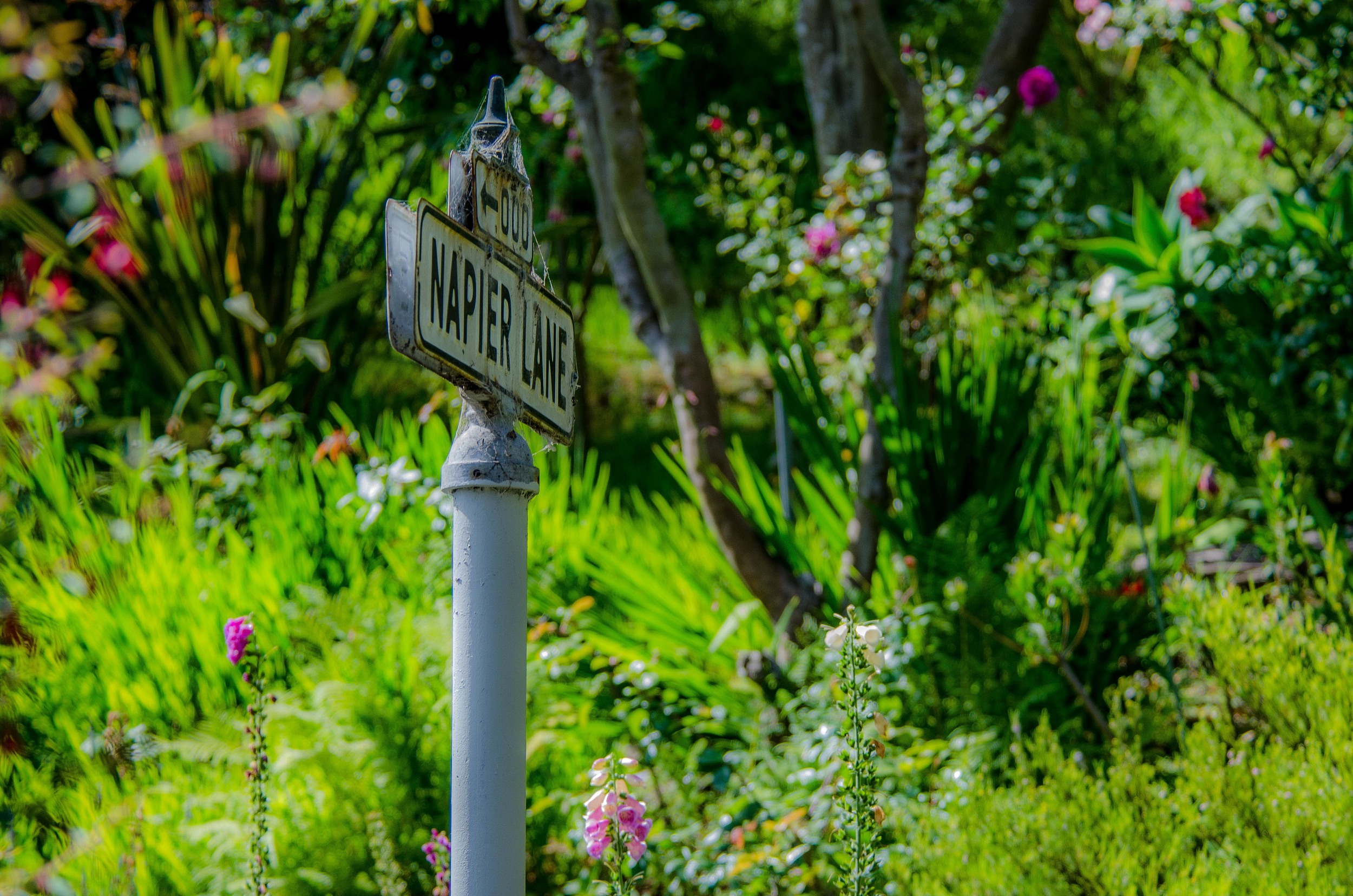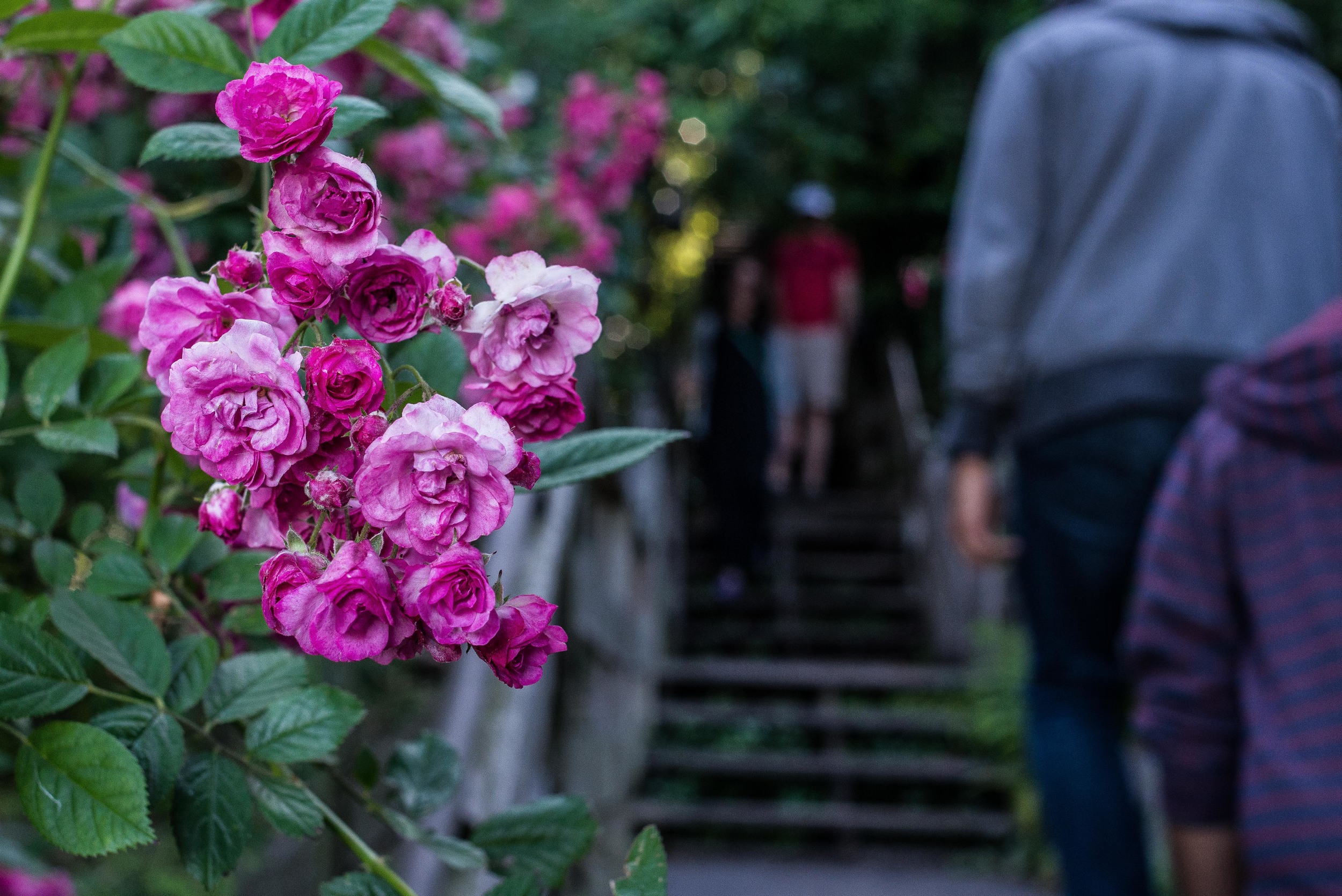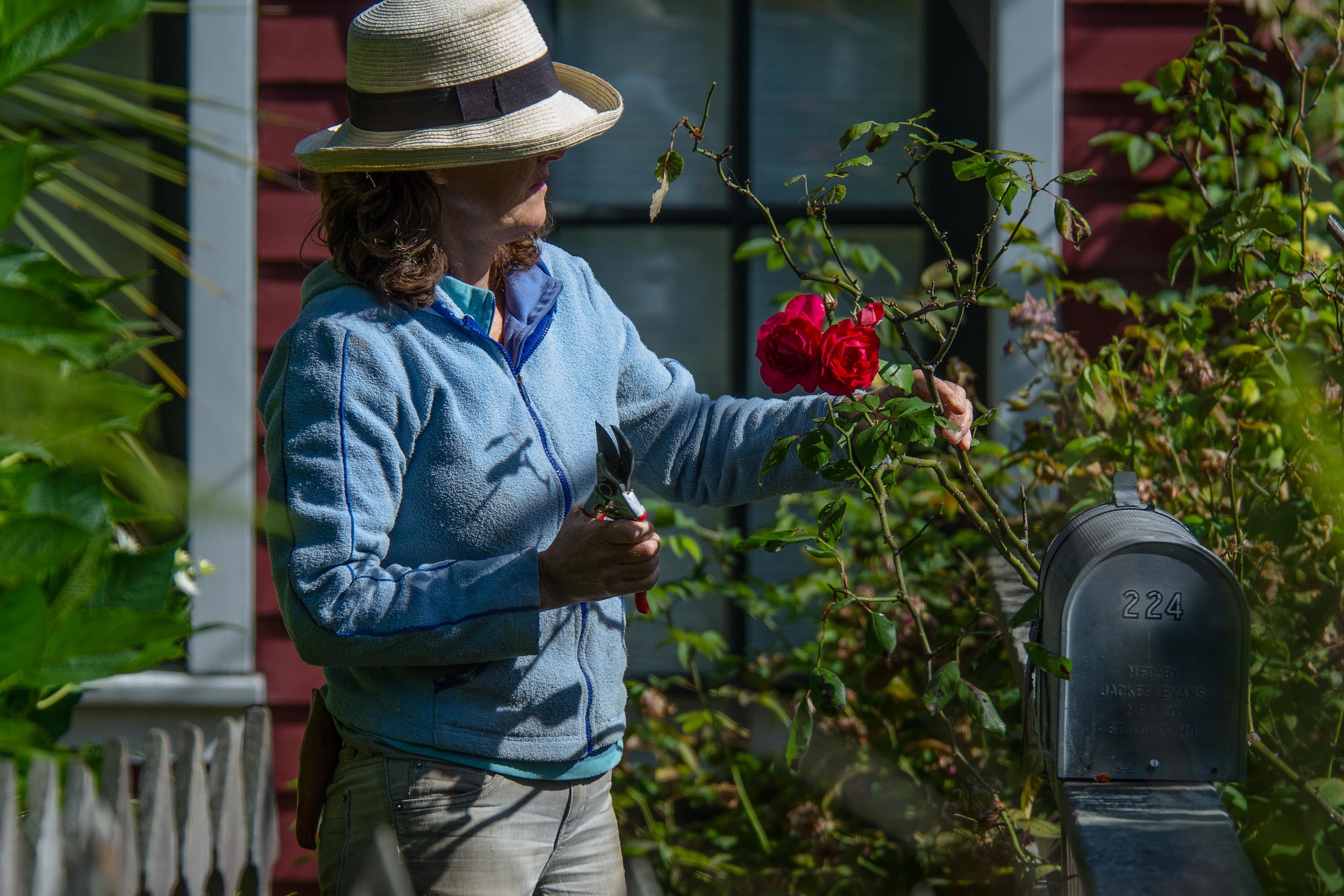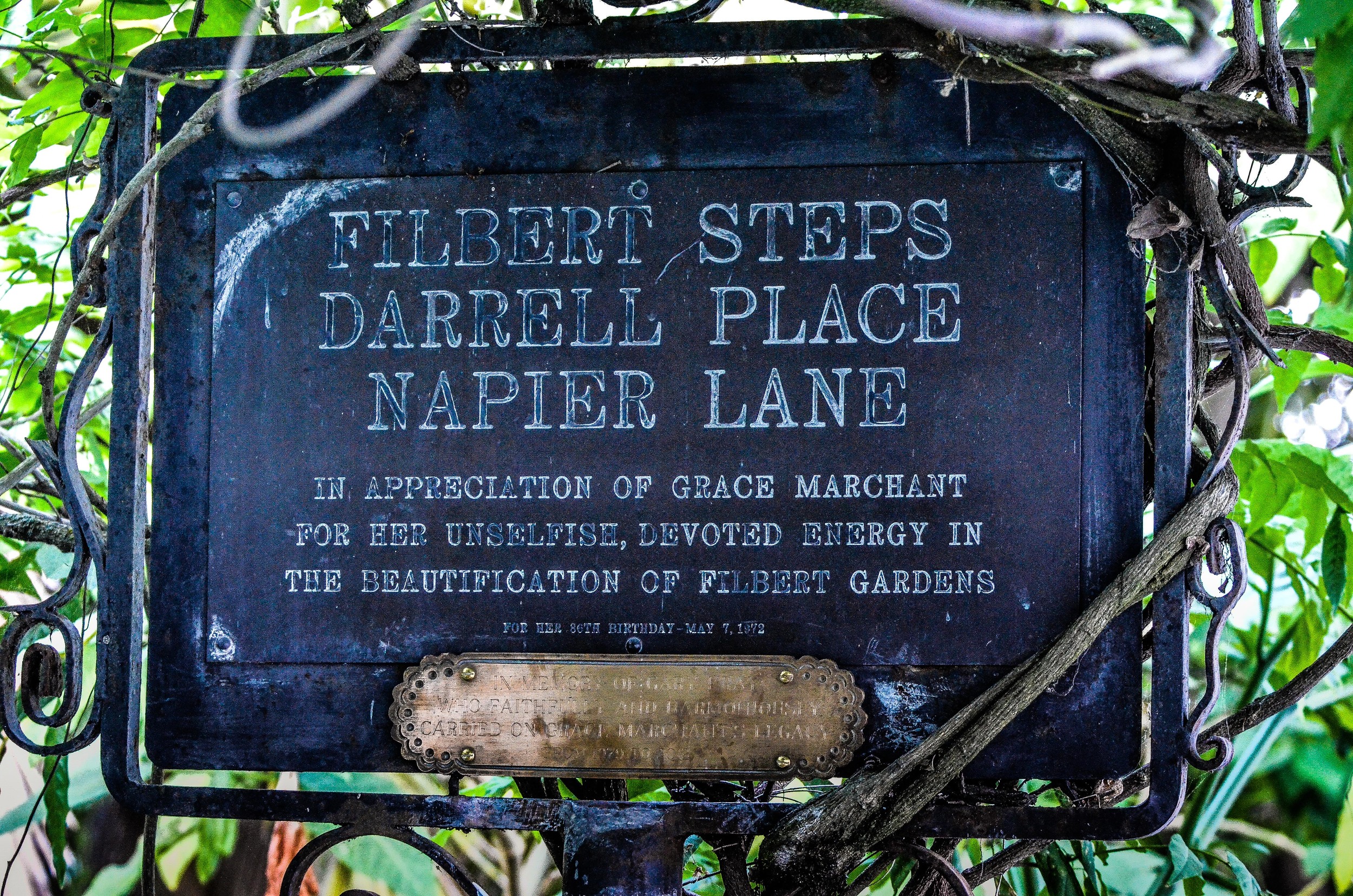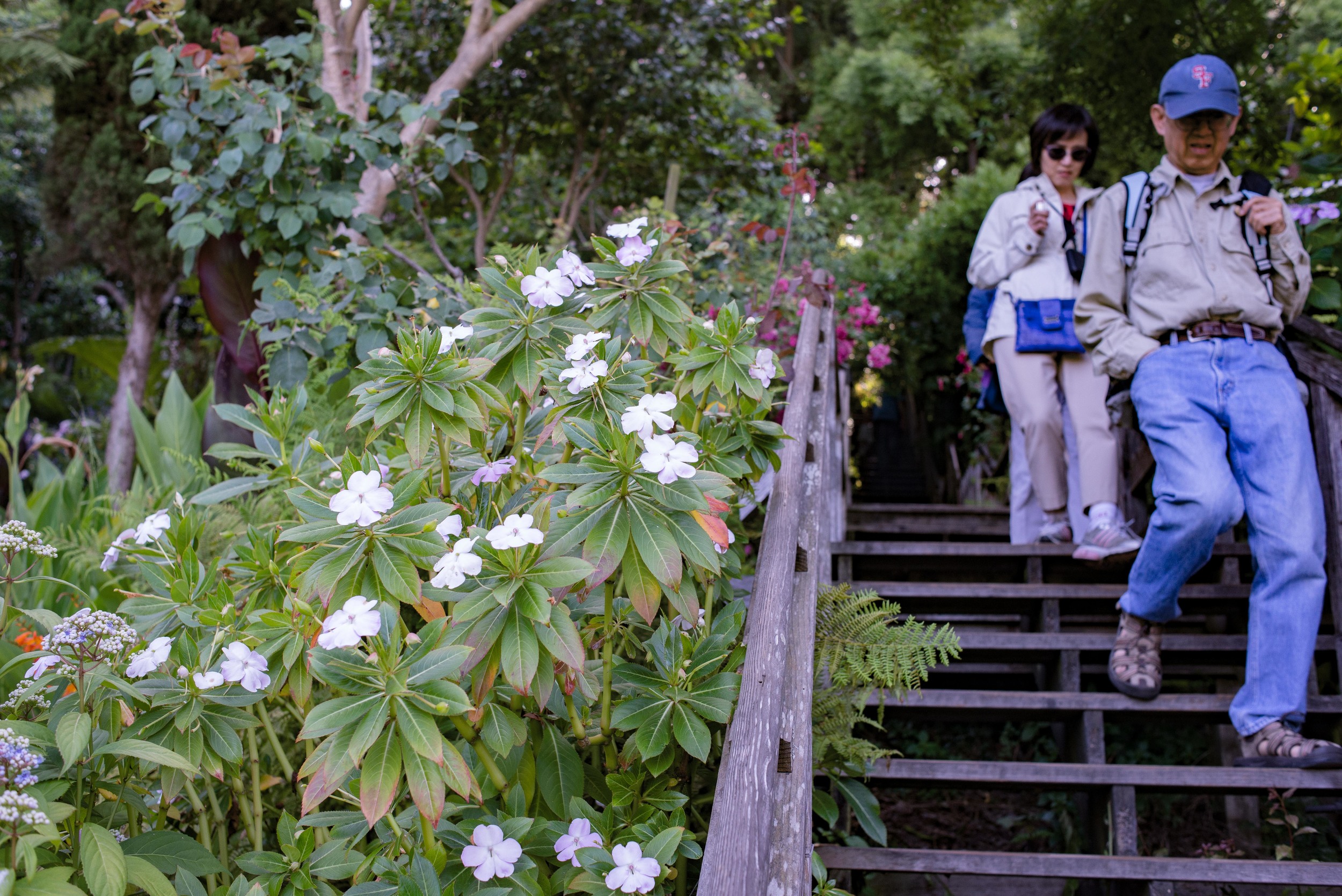A San Francisco Garden on Telegraph Hill - Homestead Magazine
IN 1949, THE PICTURE window of Grace Marchant’s flat, on Telegraph Hill in San Francisco, framed a discouraging view: The empty lot next door held a tangle of old bedsprings, bottles, and lumber, cast-offs from dismantled earlier lives that had once populated the slopes above the city’s hectic waterfront. One day, the fed-up 63-year-old marched outside and hurled the bottles and bedsprings off a cliff onto the empty lot below. What happened next is just a twig short of legend.
On a recent morning, the writer and publisher Larry Habegger, who moved next door to Marchant in the 1970s, reconstructed the anecdote during a chat in his kitchen overlooking the hillside sprawl of leaves, limbs and flowers. The cliff she’d hurled the stuff over was the lip of an old quarry, he said, and the debris that landed below annoyed the agents of the city. But Marchant didn’t care. “When the city ordered her to stop, she told them to stuff it,” he said.
Marchant, who’d seen a fair amount of life’s quirks already — she’d been a shipyard riveter, a ceramic artist, and a stuntwoman in the silent movies, among other things — had an unwavering vision for the space. It would shimmer with beauty and color; it would be a garden. What she didn’t envision was that someday her efforts would grow influence beyond her realm, and charm the world.
Telegraph Hill rises 284 feet above the San Francisco Bay. At its summit is the 1933 landmark, Coit Tower, from which you can gaze onto such treasured sites as Alcatraz, Angel Island, and the graceful Golden Gate Bridge. Halfway down the east slope, on the warmer, less-windy side of the hill, blooms Marchant’s half-acre of paradise.
To get there, you don’t simply park and walk; you climb. From Sansome Street below, Filbert Street turns into 95 metal and concrete steps zig-zagging up the old quarry face. At the top, a wooden stairway appears, and then a refreshing scene unfolds — wildly vivid, fragrant, and twittering with the chatter of people and birds, it is Marchant’s garden in bloom. There are pink teardrops of fuchsia, bold plumes of hydrangea, and speckles of anemone. There are groves of cone-shape foxglove and sprays of quivering poppy. There are green-fanning banana trees, yellow-fruited loquat, and princess trees spilling with violet trumpets. Everywhere grows Marchant’s favorite flower, the rose.
This is similar to what Habegger found when he first explored the steps with a friend some 37 years ago. “We saw hummingbirds and flowers everywhere,” he recalled. “It was like walking into an Eden.”
One cottage in particular caught his eye that day, and as he returned to the lavish block, enjoying the garden again and again, he started to dream of living in the house someday. What happened a year and a half later can only be called fate. The house’s resident, Gary Kray, advertised for a roommate. When Habegger moved in, it touched off a life-long friendship binding the two of them to the wildly tumultuous pocket of greenery outside.
In the 1875 house next door to Kray lived Grace Marchant; by now tending the garden was her daily passion. “She had turned a junkyard into an oasis of beautiful flowers and tranquility,” Habegger said. “Everybody appreciated what she did. She did it with no compensation.”
Habegger learned that when Marchant had started the garden, she’d been suffering from arthritis, but time among the plants had limbered up her joints and eased her pain. In her 90s when he moved in, she was finding the work more difficult, especially the weeding. “Occasionally the neighbors would get together for weeding parties,” Habegger said. “We’d work for half a day, and a few weeks later the weeds would be back.”
In 1979, Kray decided to help more consistently as her apprentice. “He learned how to garden from her, and he fell in love with the garden through her,” Habegger said. “From her death in 1982 on, Gary took care of everything.”
Kray brought the garden entered a new phase. He installed tree ferns, Italian cypress, and palm trees — plants that added variety and height yet did not shade the flowers that needed sun. “Rather than having everything be trim and neat, Gary liked painting the garden with colors and textures,” Habegger said.
The garden gained fame in guidebooks and travelogues, and its place as a landmark seemed secure – until 1984. That’s when a developer made moves to down an existing cottage nearby and build something much larger that would boom into the cultivated lot.
Neighbors were appalled. Together with Habegger and Kray they formed an ad-hoc organization, Friends of the Garden, to raise funds and buy the land and cottage. The required $320,000 seemed a phenomenal sum, but the group had verve.
“We ran a square-inch campaign,” Habegger said. “If you sent $10 to our cause, you’d get a certificate saying you’d have figurative title to one square inch of the Grace Marchant Garden.” Newspaper stories and a t-shirt campaign generated donations, and the group eventually raised $210,000 from 4,000 donors. The Trust for Public Land fronted remaining funds, sealing the purchase. The Friends then sold the cottage with deed restrictions so it could never be expanded, and they paid back the Trust. Leftover funds went into an endowment. The garden was saved.
During the same decade, Kray and Habegger were able to buy the house where Marchant had lived. In 1990, Habegger and his future wife, Paula McCabe, moved into the top floor apartment.
Kray’s time as garden curator sadly ended in 2012 when he died of heart failure, ripping a hole in the Habbaggers’ lives and opening a question about who would tend the garden. The uncertainty didn’t last. McCabe had been helping Kray with the garden for 10 years, and she and Habegger gamely took over the task. Now they have their own goals, which include clearing out the big, leafy ferns that camouflage some of the flowers, and cleaning up the paths in order to make the garden more inviting.
“I really enjoy doing it,” McCabe said. “I love having it on my doorstep. When I’m out here, I’m very happy.”
Just then, two young women walking by stop for a moment to watch the McCabe, the secret tender of the garden. One thoughtfully turns to her friend and says, “It’s wonderful what she does. It’s a gift to the city.”
And the Grace Marchant Garden is a gift to its curators, as well.
All Photos Copyright Laura Read
